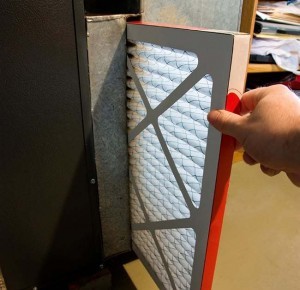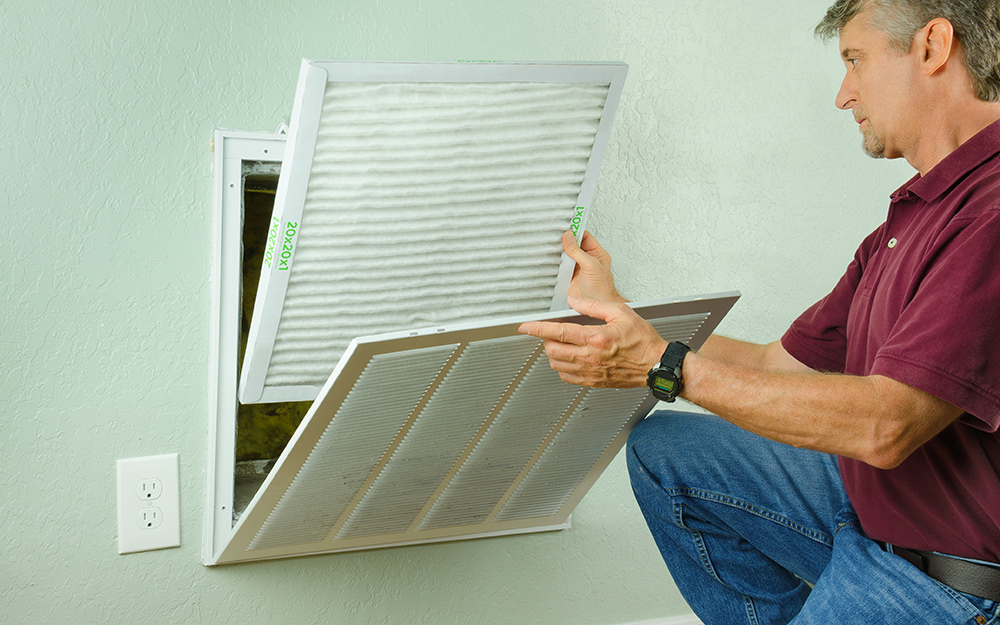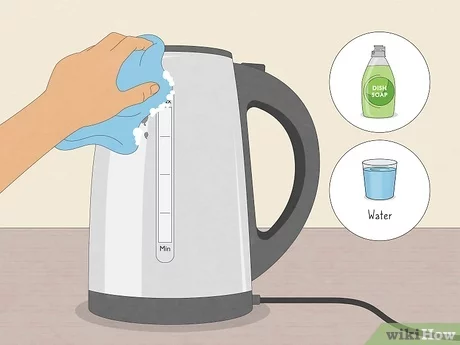How to Change an Air Conditioner Filter
To change an air conditioner filter, first, turn off the unit. Next, locate and remove the old filter.
Changing an air conditioner filter is essential for efficient performance and clean air. Filters trap dust, pollen, and other particles, ensuring your indoor air stays fresh. Neglecting this task can lead to reduced airflow and higher energy bills. Regular maintenance helps extend the life of your air conditioner and keeps it running smoothly.
Most filters should be replaced every 1-3 months. Always check your unit’s manual for specific instructions. By keeping your filter clean, you improve air quality and maintain a comfortable home environment. This simple task can save you money and prevent potential issues with your HVAC system.

Credit: rainaldihomeservices.com
Introduction To Air Conditioner Maintenance
Changing your air conditioner filter is very important. It helps keep the air clean. Dirty filters make your home dusty. Clean filters improve air quality. They also help the air conditioner work better. This saves energy and money.
Clean filters protect your health. Allergens get trapped in dirty filters. Clean filters reduce allergies. Your family will breathe easier. Changing filters is simple and quick. Do it regularly for the best results.
Air quality improves with clean filters. Dust and pollen get trapped. This keeps the air fresh. Poor air quality can cause health problems. Clean filters are essential for a healthy home.
System efficiency increases with clean filters. The air conditioner works less hard. This saves energy and reduces bills. Regular filter changes extend the life of the unit. Your air conditioner will last longer.

Credit: www.youtube.com
Identifying When To Change Your Ac Filter
A clogged filter can make your AC work harder. This can raise your energy bills. Dust and dirt on the filter are clear signs. Airflow might feel weak or uneven. Unpleasant odors can also be a clue. Allergy symptoms might get worse. Your AC might make more noise than usual. All these signs mean it is time to change the filter.
| Filter Type | Replacement Interval |
|---|---|
| Fiberglass Filters | Every 30 days |
| Pleated Filters | Every 90 days |
| High-Efficiency Filters | Every 6-12 months |
Types Of Air Conditioner Filters
Fiberglass filters are the cheapest option. They are made of fiberglass strands. These filters catch large particles like dust and lint. They need to be changed often. Pleated filters are a bit more expensive. They have folds that trap more dirt and allergens. These filters last longer and improve air quality.
HEPA filters are high-efficiency filters. They capture tiny particles like pollen and pet dander. These filters are perfect for people with allergies. They offer superior allergen reduction. They are often used in hospitals and cleanrooms.
Gathering Necessary Tools And Materials
You need a new air conditioner filter. Choose the correct size for your unit. A screwdriver may be necessary. Have a soft cloth ready. You might also need a vacuum cleaner. This helps to remove dust from the area.
Turn off the air conditioner before starting. This prevents electric shocks. Wear gloves to keep your hands clean. Be careful while removing the old filter. Dispose of it properly to avoid spreading dust. Keep children and pets away during the process.
Locating Your Ac Filter
First, find the main unit of your air conditioner. This is usually inside your home. Next, look for the air handler or furnace. This is often in a closet, basement, or attic.
Check near the return air duct. This is where the filter is often located. Sometimes, the filter is behind a grill. This grill can usually be opened easily. If you see a slot or compartment, the filter might be there.

Credit: ecoactions.homedepot.com
Step-by-step Filter Replacement Process
First, find the power switch on your air conditioner. It is usually near the unit or on your home’s breaker panel. Turn off the power to ensure safety. Make sure the unit is completely off before proceeding.
Locate the filter compartment. It is often behind a cover or grille. Open the cover carefully. Slide out the old filter. Pay attention to how the old filter is placed, as you will need to insert the new one the same way.
Take the new filter out of its packaging. Make sure it matches the size and type of the old filter. Slide the new filter into the compartment. Ensure it is secured and fits properly. Close the cover or grille. Turn the power back on to your air conditioner.
Ensuring Proper Fit And Airflow
Always check the airflow direction marked on the filter. The arrows should point towards the air conditioner. This ensures the filter works efficiently. Insert the filter in the correct direction. An incorrectly installed filter can reduce airflow and efficiency. Proper orientation helps the air conditioner run smoothly.
Close the filter compartment securely after replacing the filter. Ensure there are no gaps or loose edges. A tight seal prevents dust and debris from entering. This helps maintain good air quality. A well-sealed compartment also improves energy efficiency. Regularly check the seal to ensure it remains intact.
Post-change Checklist
Turn on the AC to test it. Ensure cool air flows through vents. Check for any unusual noises. Verify the thermostat settings. Confirm the temperature is accurate.
Mark the next filter change on your calendar. Set a reminder on your phone. Typically, change filters every three months. Some units may need more frequent changes. Check the manual for specific recommendations.
Place the old filter in a plastic bag. Seal the bag tightly to prevent dust escape. Dispose of it with regular household trash. Never reuse an old filter. Reusing can damage your AC unit.
Troubleshooting Common Issues
Strange noises can come from your air conditioner. These noises can be scary. A loose filter might cause the noise. Check if the filter is in place. Make sure it is secure. A dirty filter can also make noises. Clean or replace the filter. Loud banging sounds are more serious. Call a professional for help.
Sometimes, the air conditioner doesn’t work well after changing the filter. First, check if the new filter is the right size. A wrong-sized filter can cause problems. A dirty air conditioner coil can also be the issue. Clean the coil carefully. If the problem continues, the air ducts might be blocked. Call a technician to inspect the system.
Enhancing Ac Performance
Keeping your air conditioner clean is important. Always check for dust and debris. Clean the coils and fins regularly. Make sure vents are clear of obstructions. Change the filter every 1-3 months. Keep your outdoor unit free of leaves and dirt. Inspect the insulation on refrigerant lines. Replace if damaged. Check the thermostat settings. Ensure it’s working properly. Schedule routine inspections with a professional.
Strange noises or smells from the unit need expert attention. Poor cooling performance also requires a professional. Frequent cycling of the AC unit is a sign of trouble. High energy bills can indicate efficiency issues. Water leaks around the unit should be checked. Frozen coils need a technician. Electrical issues are dangerous, call an expert. Thermostat problems might need professional help. Routine inspections by a pro keep your AC in top shape.
Conclusion
Changing your air conditioner filter is simple and essential. Regular maintenance ensures better air quality and system efficiency. Follow these steps to keep your home comfortable and your unit running smoothly. Don’t forget to check your filter monthly. A clean filter can save energy and reduce costs.





